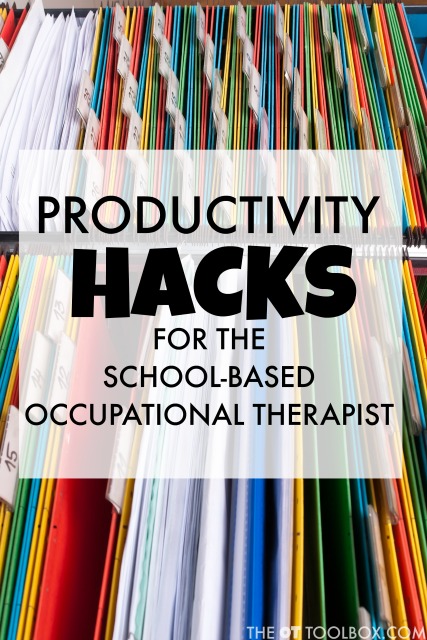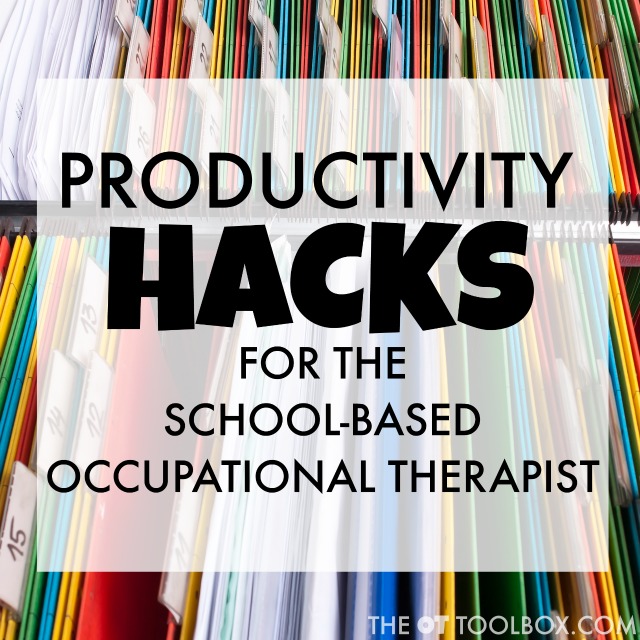April is Autism Acceptance Month! For school based therapists, the end of the school year is in sight. But the start of Spring brings forth a chance for new beginnings and new growth, even as we start to wind down the school year. Every April, we celebrate Occupational Therapy Month. It is a chance for us to celebrate our profession, inspire each other to remember the reasons why we chose a career in occupational therapy, and to show the world the gifts we have to offer in supporting individuals with the things that matter the most!

Autism Acceptance Month
April is also Autism Acceptance Month. So, this is a perfect time to reflect on Occupational Therapy’s role in working with autistic individuals and how we can support neurodiversity acceptance in the places we work, with the clients and students we support, and in our world!
Not only in April, but all year long is a great time to support, advocate for, and help others understand, embrace, and connect with the unique qualities of autistic individuals.
Not sure where to start? It can be overwhelming to take in all the information that comes at us each day through the news and social media, but occupational therapy practitioners can continue to do what we have always done…
- listen to our clients and listen to the autistic voices that are in the media
- use a strengths based approach
- focus on environmental modifications
- identify meaningful goals and work towards improving participation
- use evidenced based practice
- and advocate for our autistic clients
We can also take a look at what we have done in the past and what we should look to do in the future. Like the old saying goes, “When you know better, DO BETTER!” So let’s take a look at what we know and what steps we can take to support neurodiversity.
Autism Neurodiversity
The prevalence of autism has significantly increased over the last 20 years, with the most drastic changes happening in the last 10 years. Currently, The CDC reports the prevalence of autism as 1 in 44 children in the United States. It is the most rapidly growing developmental disorder and is more common in boys than girls.
Identity First Language
Historically, occupational therapy practitioners were trained to use “person first” language, so you may have heard us say things like “my students with autism”. Kenny, L. et al (2015) found that medical professionals, family members, and friends preferred using person first language. However, autistics report that person first language doesn’t recognize that autism is part of their identity.
Although identity first language is preferred by many autistics, it is not the preference of all. So, what can you do?
To know better and do better, you can ask the individual. You can ask and honor the preferences of your students. You can educate yourself on the neurodiversity movement which suggests that brain differences can be challenges, but they can also be strengths.
Going for gold in April instead of “lighting it up blue”
Autism Speaks is the largest organization that claims to support autistic individuals and their families. They are also probably the most widely known and started the campaign to “light it up blue”. However, the work they have done to bring awareness to autism, has come with criticism from autistic adults for their focus on finding a cure.
Autistics are frustrated by the lack of representation within the Autism Speaks organization. Much of the funding at Autism Speaks does not actually support autistic people. Most concerning is the lack of support for self-advocacy with a focus on the negative implications of living with autism.
Light it up Gold instead of Light it up Blue.
The autistic community is trying to change the way we think about Autism awareness and acceptance. While the color blue (seen as sad) or the puzzle piece symbol (seen as something is missing) has historically represented autism awareness, autistic adults have embraced using gold (whose chemical abbreviation is “Au”) to spread autism acceptance.
Gold is regarded as having high value and represents authenticity.
Here are some links to read more about promoting autism acceptance:
How can we use this information to improve our practices?
If you’re not sure what to do next, consider attending professional development opportunities or check out audiobooks for occupational therapists to learn how to support autistic clients and neurodivergent students.
As you grow in your knowledge, don’t forget that the domain and process of occupational therapy will continue to frame your work.
- Evaluate your students using a top-down, strengths based approach. Use what we know about sensory preferences and visual supports to highlight the strengths of our autistic students. Check out this resource: Sensory Strategies for the School Based OT.
- Listen to your autistic students as individuals in order to develop meaningful outcomes. What are their goals? What aspects of school are important for them?
- Support neurodiversity- Don’t forget to assess the environment and make modifications to support neurodiversity using Sensory Diet Strategies for the Classroom.
- Promote and educate on neurodiversity- Expand our inclusive practices to educate and promote acceptance in the school community about autism and neurodiversity. Perspective taking goes both ways.
- Embrace interests of the individual. Find out what interesting, meaningful for a shared connection. Integrating interests into therapy is exactly what occupational therapy is!
OT as an Autism Advocate
Lastly, we must use our occupational therapy voices to advocate for autistic students and neurodivergent learners.
- Talk to the administrators at your school about inclusion, acceptance, and perspective taking amongst all students.
- Educate families with autistic children about resources and supports that are available to them.
- Start conversations with coworkers who may not be as familiar with current trends related to autism and neurodiversity.
- Most importantly, teach and support your autistic students to share their perspectives and self advocate for their needs.
Let’s honor autism and occupational therapy month by reflecting on the important work that we do and celebrate the amazing students we get to work with everyday!
References:
Kenny, L., Hattersley, C., Molins, B., Buckley, C., Povey, C. & Pellicano, E. (2015). Which terms should be used to describe autism? Perspectives from the UK Autism community. Autism: 1-21.

Katherine Cook is an occupational therapist with 20 years experience primarily working in schools with students from preschool through Grade 12. Katherine graduated from Boston University in 2001 and completed her Master’s degree and Certificate of Advanced Graduate Study at Tufts University in 2010. Katherine’s school based experience includes working in integrated preschool programs, supporting students in the inclusion setting, as well as program development and providing consultation to students in substantially separate programs. Katherine has a passion for fostering the play skills of children and supporting their occupations in school.





